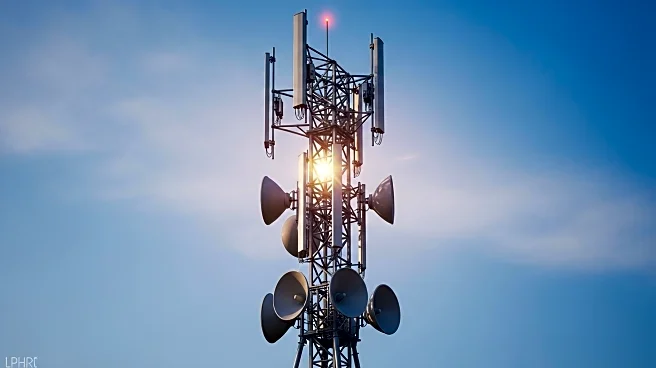What is the story about?
What's Happening?
Communications service providers (CSPs) are exploring the integration of 800G coherent pluggable optics into their IP over DWDM strategies. A survey conducted by Heavy Reading, part of Omdia, reveals that CSPs are interested in using these optics for diverse applications, with many planning to start deployments at 400G data rates and increase capacity as needed. The survey highlights the flexibility of 800G coherent pluggables, allowing CSPs to optimize current network demands while preparing for future growth. CSPs are also considering management preferences for these optics, with half of the respondents planning to use a muxponder/transponder as a physical demarcation point between data and optical operations.
Why It's Important?
The adoption of 800G coherent pluggable optics by CSPs is crucial for enhancing network capacity and efficiency. These optics offer significant cost and power benefits, enabling CSPs to address growing data demands and optimize network performance. The integration of new technology with legacy infrastructure presents challenges, but also opportunities for CSPs to innovate and improve operations management. The survey results indicate a shift towards more flexible and scalable network solutions, which could have a lasting impact on the telecommunications industry.
What's Next?
As CSPs continue to integrate 800G coherent pluggable optics, they may need to adapt their infrastructure and operations management practices to fully realize the benefits of these technologies. The survey suggests that CSPs are still navigating the management of coherent pluggables, with preferences for optical controllers and direct in-band communication. This ongoing evolution may lead to further advancements in network management strategies and the development of new solutions to meet the demands of modern telecommunications.
Beyond the Headlines
The integration of 800G coherent pluggable optics into CSP networks may have broader implications for the industry, including potential changes in interoperability standards and cost-efficiency. The preference for optical controllers and direct control reflects a desire for autonomy and security, which could influence future developments in network management practices. As CSPs continue to balance new and legacy requirements, the industry may see shifts in operational strategies and technological innovations.
AI Generated Content
Do you find this article useful?













